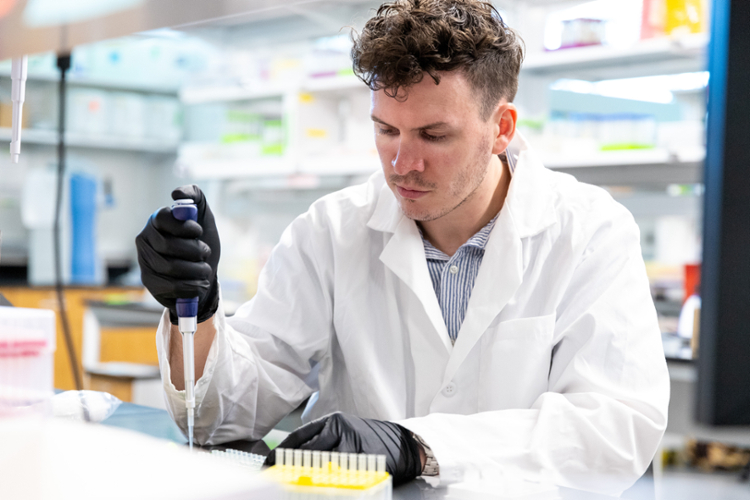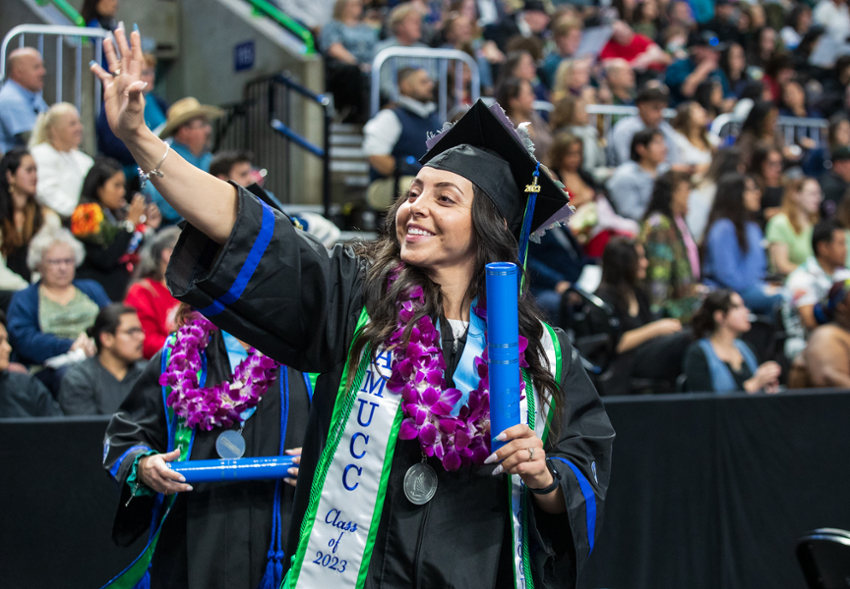Distinguished Forensic Anthropologist Joins A&M-CC to Strengthen Forensic Science Course Offerings
CORPUS CHRISTI, Texas – As a forensic anthropologist at the Harris County Institute of Forensic Sciences in Houston from 2006 to 2018, Dr. Sharon Derrick was often able to provide a family with an answer to a painful mystery.
A loved one went missing and the hope is that science will at long last provide information—heartbreaking, gut-wrenching news though it may be—that will answer the question of fate. In some of the many cases she’s worked on, families have waited for years, decades even, to learn the fate of a family member whose absence has kept parents, siblings, even distant relatives tethered to a fixed point in time: the last day that loved one left home.
Derrick joined the Department of Life Sciences in the College of Science and Engineering at Texas A&M University-Corpus Christi in summer 2018 to strengthen the Island University’s forensic science course offerings. To that end, Derrick will open the new Forensic Anthropology Center lab in the University’s newest facility, Tidal Hall, and will add forensic anthropology courses in subsequent semesters.
A forensic anthropologist is a scientist trained in physical or biological anthropology who applies their expertise in human skeletal anatomy, bone growth and development, and bony reaction to trauma or pathological conditions to legal system casework, Derrick said.
“Forensic anthropologists often work in the university setting, so you can find them in small university towns and you can find them in large cities. What is relatively new in larger jurisdictions are forensic anthropologists who are full-time employees of a medical examiner’s office, consulting on cases in real time rather than having human remains shipped to their lab for analysis,” she added.
An Austin native, Derrick was a Radio-Television-Film major at The University of Texas in the ‘70s when she signed up for an anthropology class to bypass the physics requirement of her degree plan. She quickly fell in love with the program and changed her major.
“It was eye-opening how we could learn about ourselves through people of the past,” Derrick said.
Derrick eventually earned a Ph.D. in Physical Anthropology at Texas A&M University and accepted a position as a physical anthropologist with the Harris County Institute of Forensic Sciences, which contains the Chief Medical Examiner’s Office and a crime lab, in 2006. After additional training under the mentorship of a board-certified forensic anthropologist, Derrick also achieved board-certification.
“When I first arrived in Houston, I primarily developed demographic information for skeletal remains that had been retained for anthropology analysis, but as time went on, we increased our expertise in cartilaginous analysis. For example, if someone had a fractured larynx, we might look at that and talk about the forces that caused that larynx to fracture,” Derrick said. “Forensic anthropologists do a lot of trauma analysis in addition to estimating age, sex, stature, and ancestry to help identify human remains.”
Derrick’s work has been prominently featured by a wide range of media outlets, including The Associated Press and Houston Chronicle as well as numerous news reports by Houston TV stations.
But the case for which Derrick will forever be associated is the one which has yet to be completely solved: early ‘70s Houston serial killer Dean Corll, also referred to as “The Candy Man.” Derrick’s work on the case was extensively featured in “The Lost Boys” feature by Skip Hollandsworth in the April 2011 issue of Texas Monthly.
The known facts of the case are especially grim: Between 1970 and 1973, Corll abducted, raped, tortured, and murdered no fewer than 30 male victims between the ages of 13 and 19 with the help of two teenage accomplices, David Brooks and Elmer Wayne Henley, Jr. Many of the victims were from the Heights area of Houston, where Corll had operated his family’s candy factory for a time. The victims were buried by the killer and his accomplices in remote locations across the Greater Houston area.
The families of the victims were unsuccessful in convincing law enforcement that the disappearances were the result of foul play; Corll’s crimes were uncovered in August 1973 by the Pasadena, Texas Police Department after Henley fatally shot Corll at his Pasadena residence. A major investigation by law enforcement representing Pasadena, Houston, Harris County, Chambers County, and the Texas Rangers led to confessions in which Henley and Brooks provided details on the murders and burial sites. Both Henley, whose 1979 retrial was held in Corpus Christi, and Brooks continue to serve life sentences to this day.
“When I got to the Harris County Medical Examiner’s Office, one of the things I was charged with was looking through all of the stored remains to see if there was any work that could be done on them before we sent them off to a county-assisted burial,” Derrick said. “I found three boxes that were labeled Houston Mass Murders. I asked if I could have permission to work on those boxes.
“There was more than one individual in each box. Out of all the individuals in the boxes, there’s only one that we were not able to identify, and that’s ML73-3356,” she said.
From the time she began work on the Houston Mass Murders case, Derrick identified the remains of seven victims, including correcting several misidentifications, through the use of modern forensic science tools, such as DNA analysis and computerized facial approximations. Her work, including her efforts to learn the identity of the 15-17 year-old victim known as ML73-3356, was most recently profiled in a “Missing Pieces” report on Houston TV station KHOU, which ran on the 45th anniversary of Corll’s death in August.
Course Offerings
At the Island University, Derrick is set to teach a section of the Professional Skills course in the Department of Life Sciences, which focuses on essential skills and habits students need to be successful as well as a course called Special Topics in Forensic Anthropology: Exploring Careers in the Forensic Sciences. In that course, students will hear presentations from working professionals, including a forensic pathologist, an autopsy assistant, and a mass fatality planning specialist, and get a chance to ask questions as well.
“We’re also going to do a couple of interactive in-class projects; I’ll have my students deconstruct a homicide case from beginning to end,” she said. “We will also do a mass fatality tabletop exercise, which mass fatality planning folks do all the time. We’ll go through how an actual mass fatality is managed.”
Derrick said she’s looking forward to adding new courses in the fall that will eventually allow students to minor in forensics.
“The goal is to generate some Islander forensic scientists out there – maybe forensic chemists, forensic toxicologists, forensic anthropologists, and especially medical examiners, who are in high demand,” she said. “We’ve got what it takes here; we just need to grow our program to fully support TAMU-CC students who want a career in the forensic sciences.”

